Walk-around of the Safari Ltd. Wild Safari Wildlife (but also listed in the Safari Farm line) ostrich, Struthio camelus Linnaeus, 1758, originally released in 2010. Height is 88 mm but the figure is not standing fully upright and would be over 100 mm if it did. So the scale would be between approx.
Kidako Moray (Enoshima Aquarium 3D Atlas Anima Series 2 by Kaiyodo)
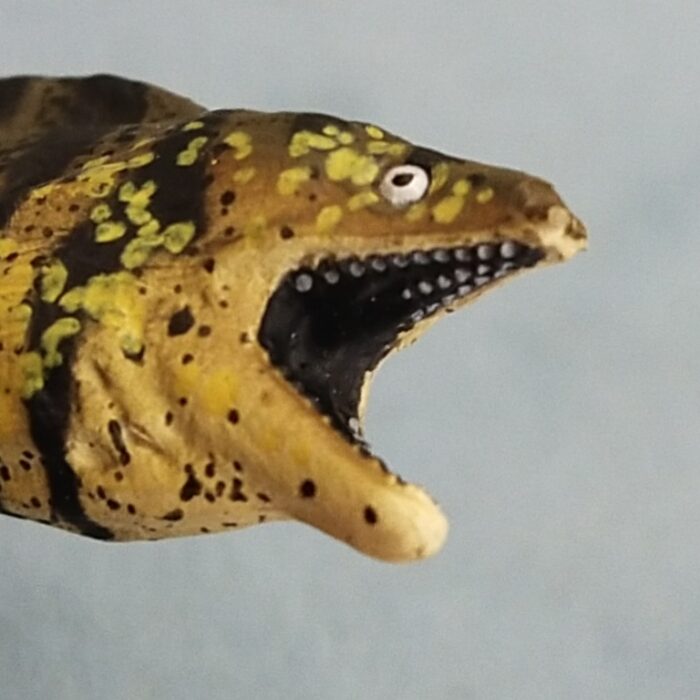
Review and images by JimoAi; edited by bmathison1972
The Kidako moray (Gymnothorax kidako) is a species of moray eel inhabiting coral reefs in subtropical and tropical seas around western to central Ocean Pacific area from Taiwan to Polynesia, including Hawaii, and from south Japan and Korea to New Caledonia.
Hippopotamus, 1996 (Wild Safari Wildlife by Safari Ltd.)
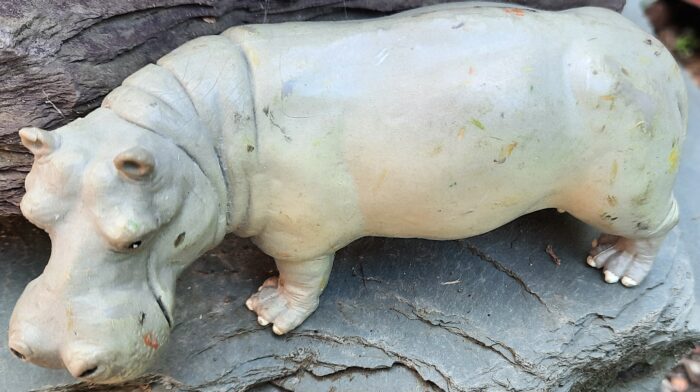
Another “Savanah Summer” that will see us back into the water, or at least wade through it. After all, though they are known as “water horses”, the Hippopotamus (Hippopotamus amphibius) does not actually swim like it’s cetacean relatives, more hopping along the bottom of the body of water they are in, so don’t venture into deep water.
Sharks of the World Box Set (Colorata)

Review and images by JimoAi; edited by bmathison1972
Happy Shark Week to everyone who loves sharks! This is the time of year where TV programs go out of their way to showcase shark-based programs, most notably Discovery Channel and National Geographic. These programs help open the doors to knowledge on these animals and help the general public understand, instead of fear, these misunderstood creatures, although some programs may over sensationalize rather than give true facts.
Blacktip Reef Shark (Marine Life by Papo)
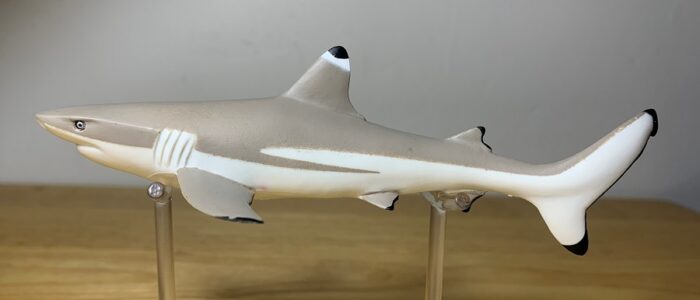
The blacktip reef shark (Carcharhinus melanopterus) is one of the most recognizable sharks, a staple in aquariums that frequents shallow coral reefs in the wild, which makes it popular among tourists and SCUBA divers. The blacktip reef shark is a generally timid species with only 11 unprovoked attacks and 21 attacks total to its name, none of them fatal.
Cloudy Catshark (Aqua World Sharks 1 by For Corporation)
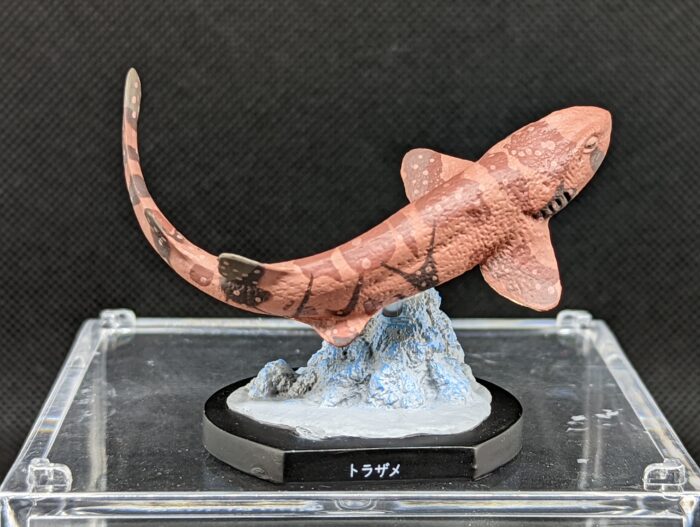
Back with another less familiar sharks for Animal Toy Blog Shark Week 2022! Well, a few days ago I introduced an odd little figure that went to the dog(shark)s so today lets balance it it out with a cat(shark). This one is a less familiar figure from a less familiar Japanese company…of a less familiar shark!
Stingray (Incredible Creatures by Safari Ltd.)
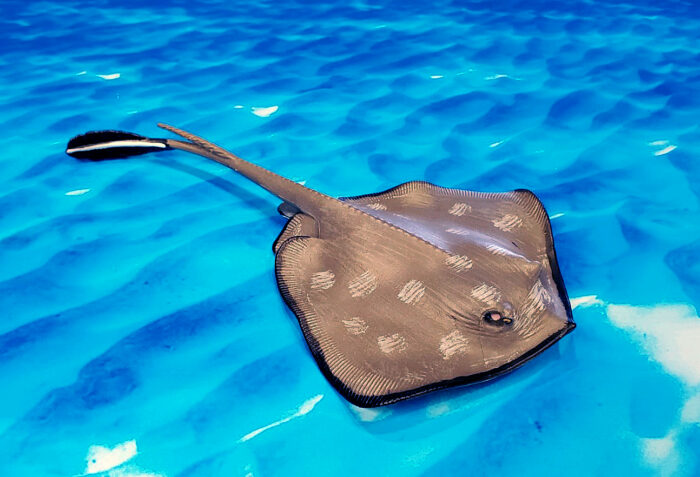
Today’s Shark Week review is going to cover the stingray that was produced by Safari Ltd. in 2020 as part of their Incredible Creatures line. I know, I know, stingrays are not technically sharks, but here at the Animal Toy Blog we celebrate all kinds of cartilaginous critters during Shark Week!
Crocodile Shark (Wild Safari Sealife by Safari Ltd.)
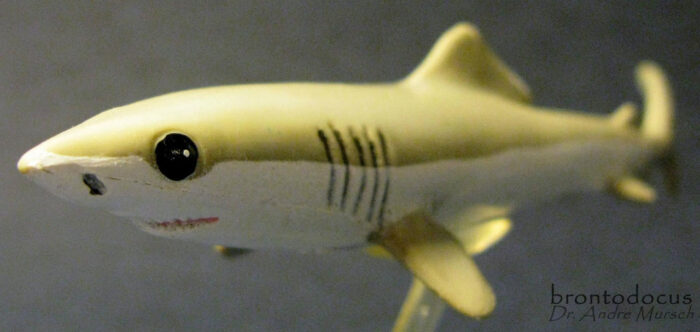
Walk-around of the retired Safari Ltd. Wild Safari Sealife crocodile shark, Pseudocarcharias kamoharai (Matsubara, 1936), originally released in 1997. Total length is 169 mm, scale approx. 1:5 – 1:6. The eyes are very large (and have that white spot, too) – which is accurate, though, it’s not only the smallest lamniform shark but also apparently stays at depths below 200 m during the day and comes nearer to the surface only at night.
Lantern Shark (Wild Republic Rubber Balls by K&M International)

So, it’s Shark Week again and once more I rise up from my own thing to bring in a couple of unusual shark models. Because I can never just bring up a more familiar figure because that’s too easy! So I’m going to look at a tiny little figure that just happens to represent a pretty tiny shark!
Salmon Shark (Wild Safari Sealife by Safari Ltd.)
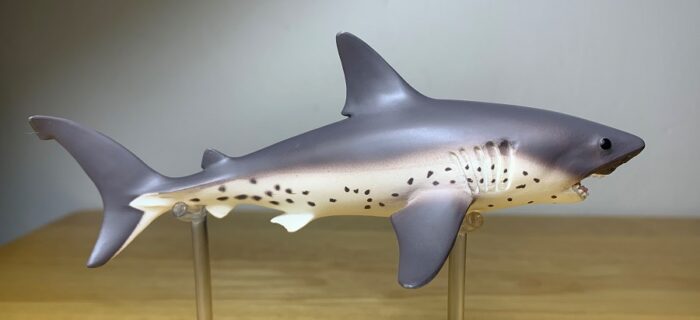
It’s Shark Week once again, the Discovery Channel’s weeklong marathon of shark documentaries that has been 34 years running. So popular is Shark Week that it’s practically a national holiday here in the United States. National Geographic has gotten in on the action too with their own Shark Fest which celebrates the cartilaginous fishes with an entire month of shark content this year.
Goliath Beetle (Diversity of Life on Earth: Beetles Vol. 3 by Bandai)
Sahara Desert TOOB (Safari Ltd.)
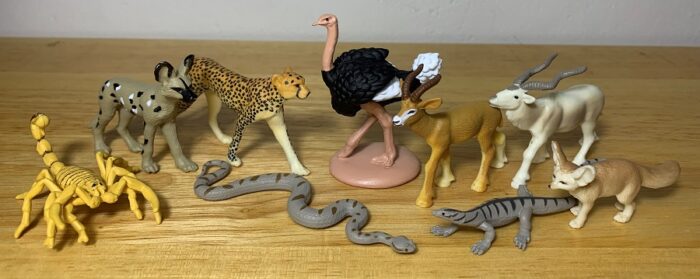
The Sahara Desert covers about 25% of the African continent and is the largest hot desert in the world, with an area of 3,600,000 square miles (9,200,000 km). This immense ecosystem is made up of sand dunes, some of which are 500’ tall, stone plateaus, sand seas, gravel plains, dry valleys, and sand flats.





